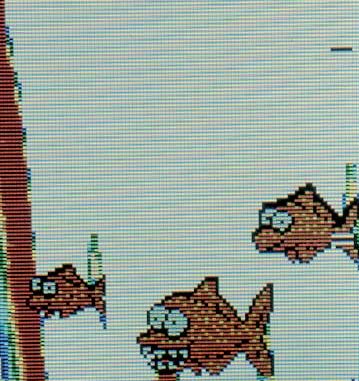
Get off the bank, and drop anchor in the middle of large lakes to greatly increase your duck harvest this winter.
Fish I.D. features that display cartoon-like fish symbols have been around since fish finders became computerized and incorporated LCD screens, and the controversy about whether the feature helps or hurts your fishing has been around just as long.
Electronics manufacturers realize that most of us would rather spend time using our equipment than learning to use it, and fish I.D. was intended to help do just that. How well it works depends on who you ask.
You can’t expect military attack-sub sonar sophistication in a hundred-dollar fish finder, but most of these features work pretty well. Some look at more parameters, but basically they pick out echoes from objects not connected to the bottom or bottom structure that are strong enough to be from fish and display them as fish symbols. The strength of echoes returned from these suspended objects determines the size of the fish symbol selected to display them.
Most units show fish symbols in three or four sizes. Some go a bit further by showing the raw pixel shape generated by the echo with a fish symbol right beside it. This can help you learn to identify the raw pixel readings most likely to be fish when the fish ID feature is turned off. Most units can also display a digital depth reading next to fish symbols that saves you the trouble of trying to judge the object’s depth by looking at the depth scale numbers at the screen’s edge.
Why turn fish ID off? Experienced anglers know that fish I.D. features sometimes mark weed clumps, brush, baitfish schools and other suspended objects with fish symbols so they usually prefer to interpret the screen picture themselves.
Some older units are designed to show only those suspended objects the computer thinks are fish when the feature is turned on, all other suspended objects are filtered out. Unfortunately, the filtered objects can include thermoclines, scattered baitfish, weeds and a lure being jigged under the boat. Rookie fish-finder users often believe that each time a fish symbol appears on the screen there must be a fish below, and they get frustrated when they can’t catch them.
The truth about the feature’s accuracy is somewhere in the middle. Enough fish are caught while fish symbols are on the screen to give many fishermen faith in the feature, but its accuracy depends a great deal on where you fish.
Many natural lakes and older reservoirs made by the Corps of Engineers back when they bulldozed a site clean before closing the dam are almost devoid of flooded cover. They don’t have submerged timber or brush, so out beyond the weed lines practically every suspended object you see is going to be a fish, and that makes the feature virtually 100-percent accurate. The more cover a lake has the more often a fish ID feature is likely to be fooled. However, most of the types of cover that cause false fish symbols are fish magnets, and fishing around them is a good idea, anyway.
I think fish I.D. features can help nearly any beginner become a better sonar user. Switching the feature on and off lets him become familiar with the size and shape of the pixel groups that his unit’s computer identifies as fish. Eventually, experience will then teach him to become better at identifying fish than the fish finder’s computer.
Spotting fish in weeds on a monochrome screen can be all but impossible, and a fish I.D. feature can sometimes help. It can place a fish symbol on promising pixel groups that the human eye sees as a jumbled mess in varying shades of gray.
Fish ID features usually incorporate an audible fish alarm that can be helpful while trolling or drifting live bait on slow days. If you are not paying close attention to the screen, a few chirps could alert you to the fact that fish are present, and prompt you to fine-tune your presentation.
These features are not perfect, but they can help you increase your ability to interpret sonar readings, and that will put more fish in your boat.


